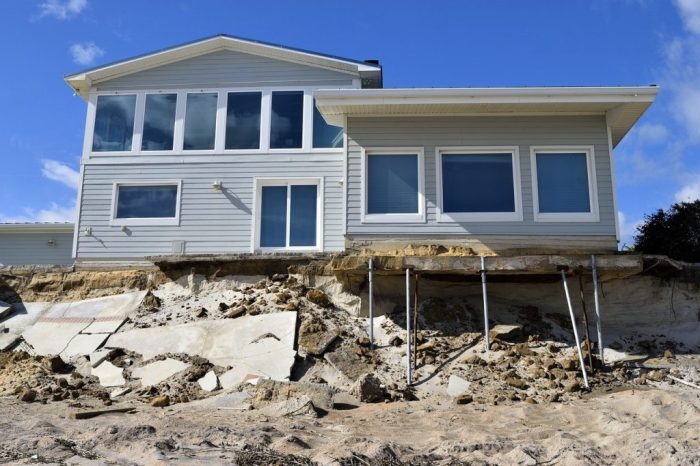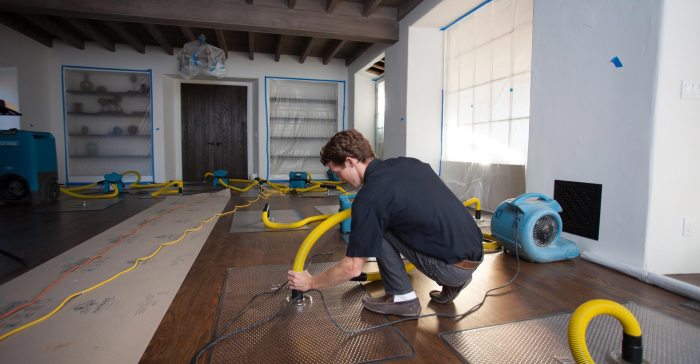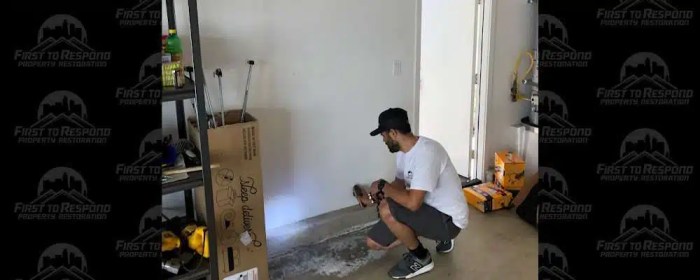
How do restoration companies work with insurance? It’s a question that pops up when disaster strikes, leaving you wondering how to navigate the process of getting your home or business back to normal. Think of it like this: you’re in a movie, the plot twist is a flood, and you need a hero to fix the situation. Enter the restoration company, ready to tackle the mess and work with your insurance to get you back on your feet. They’re like the special effects team, making things look brand new again. But how does this all work? Let’s break down the process, from filing the claim to getting your life back on track.
Restoration companies play a crucial role in the insurance claim process. They’re the ones who actually do the work of fixing the damage, whether it’s water damage, fire damage, or even mold. But how do they work with the insurance company? Well, they’re basically the go-between, ensuring the repairs are done correctly and that the insurance company pays for the work. It’s a team effort, and having a restoration company that’s pre-approved by your insurance provider can make the process much smoother.
The Insurance Claim Process
Navigating the insurance claim process after a disaster can feel overwhelming, but understanding the steps involved can make it smoother. Restoration companies work closely with insurance companies to ensure you receive the necessary coverage and repairs.
Steps Involved in Filing a Claim
Here’s a breakdown of the typical steps involved in filing a claim with your insurance company:
- Contact Your Insurance Company: The first step is to contact your insurance company as soon as possible after the disaster. Report the incident and provide details about the damage.
- File a Claim: Your insurance company will provide you with a claim form to complete, outlining the details of the incident and the damage.
- Insurance Adjuster Inspection: An insurance adjuster will be assigned to your claim. They will visit the property to assess the damage and determine the extent of coverage.
- Negotiation and Settlement: The insurance adjuster will work with you to negotiate the scope of the repairs and the settlement amount. This may involve discussions about the cost of materials, labor, and other related expenses.
- Restoration Work Begins: Once the claim is settled, the restoration company will begin the repair and restoration process. They will work closely with the insurance company to ensure the work is completed according to the agreed-upon scope and budget.
The Role of the Insurance Adjuster
The insurance adjuster plays a crucial role in the claim process. They are responsible for:
- Evaluating the Damage: The insurance adjuster will thoroughly inspect the property to determine the extent of the damage. They will take photographs, measurements, and notes to document the situation.
- Determining Coverage: The insurance adjuster will review your policy to determine what types of damage are covered and what the policy limits are.
- Negotiating the Settlement: The insurance adjuster will work with you to negotiate a fair settlement amount for the damage. This may involve discussions about the cost of repairs, replacement costs, and other related expenses.
Common Insurance Policies Covering Restoration Services
Here are some common insurance policies that typically cover restoration services:
- Homeowners Insurance: Homeowners insurance is a standard policy that covers damage to your home and personal belongings from various perils, including fire, water damage, and theft.
- Flood Insurance: Flood insurance is a separate policy that provides coverage for damage caused by flooding, which is not typically covered by homeowners insurance.
- Commercial Property Insurance: Commercial property insurance protects businesses from damage to their property, including buildings, inventory, and equipment.
Restoration Companies and Insurance
Restoration companies and insurance providers are partners in the unfortunate event of a disaster. They work together to ensure policyholders get the help they need to recover from damage caused by fire, water, mold, or other perils.
The Relationship Between Restoration Companies and Insurance Providers
Restoration companies and insurance providers have a symbiotic relationship. Insurance companies rely on restoration companies to provide the expertise and manpower needed to repair and rebuild damaged properties. Restoration companies, in turn, rely on insurance companies to provide the financial resources needed to complete the work.
How Restoration Companies Work with Insurance Adjusters, How do restoration companies work with insurance
When a policyholder files a claim, an insurance adjuster is assigned to assess the damage. Restoration companies work closely with adjusters to determine the extent of the damage and develop a plan for repairs. This process often involves:
- On-site inspections: Restoration companies and adjusters conduct joint inspections of the damaged property. This allows them to document the damage, identify the cause of the damage, and discuss potential repair solutions.
- Damage assessment: Restoration companies provide detailed estimates of the cost of repairs. These estimates are reviewed by the insurance adjuster to ensure they are accurate and reasonable.
- Negotiation: Restoration companies work with adjusters to negotiate the scope of repairs and the amount of coverage. This process can involve reviewing the policy language, discussing different repair options, and finding ways to minimize the overall cost of repairs.
Importance of Pre-Approved Restoration Companies
Having a restoration company that is pre-approved by your insurance provider can streamline the claims process and ensure a smoother recovery. Pre-approved companies have already established relationships with insurance providers, which means:
- Faster response times: Pre-approved companies are familiar with insurance procedures and can begin work more quickly. This can be crucial in the immediate aftermath of a disaster, when time is of the essence.
- Simplified communication: Pre-approved companies have direct lines of communication with insurance adjusters, which can help to expedite the claims process and minimize any potential delays.
- Guaranteed coverage: Insurance providers are more likely to approve claims from pre-approved companies, giving policyholders peace of mind knowing their repairs will be covered.
“It’s like having a trusted mechanic for your car. You know they’re going to do a good job and you’re not going to get ripped off.”
The Scope of Restoration Services
Restoration companies offer a wide range of services to help homeowners and businesses recover from various disasters. These services are designed to restore properties to their pre-loss condition, addressing structural damage, water damage, fire damage, mold growth, and other issues.
Restoration services are typically covered by insurance, and understanding the scope of these services is crucial for navigating the claims process.
Restoration Services Offered
Restoration companies offer a diverse range of services, each tailored to address specific types of damage.
- Water Damage Restoration: This service involves removing water from flooded areas, drying affected materials, and mitigating mold growth. It often includes water extraction, dehumidification, air purification, and structural drying.
- Fire Damage Restoration: Fire damage restoration focuses on repairing smoke and soot damage, rebuilding fire-damaged structures, and restoring the property to its original condition. It may include smoke and odor removal, fire debris removal, structural repairs, and rebuilding.
- Mold Remediation: Mold remediation addresses mold growth in homes and businesses, involving the removal of mold-infested materials, cleaning affected areas, and preventing future mold growth. It often includes mold testing, mold removal, and air quality control.
- Structural Repair: This service focuses on repairing structural damage caused by various events, including floods, fires, earthquakes, and storms. It may involve replacing damaged walls, floors, roofs, and other structural components.
- Content Restoration: Content restoration deals with the restoration of personal belongings and business property damaged by disasters. It includes cleaning, drying, and restoring items like furniture, electronics, documents, and artwork.
Restoration Services Covered by Insurance
Insurance policies typically cover restoration services related to covered perils, such as fire, water damage, windstorms, and vandalism. The specific services covered vary depending on the policy terms and the nature of the damage. Here are some common examples:
- Water Damage Restoration: Insurance policies often cover water damage restoration services, including water extraction, drying, and mold remediation, if the damage is caused by a covered peril.
- Fire Damage Restoration: Fire damage restoration services, such as smoke and soot removal, structural repairs, and content restoration, are generally covered by insurance policies if the fire was not caused by an excluded peril.
- Mold Remediation: Insurance policies may cover mold remediation services if the mold growth is a direct result of a covered peril, such as a water leak or flooding. However, policies often have limitations on mold coverage, such as specific timeframes or coverage limits.
- Structural Repair: Structural repairs related to covered perils, such as windstorm damage or earthquake damage, are typically covered by insurance policies.
- Content Restoration: Insurance policies often cover content restoration services, including cleaning, drying, and restoration of personal belongings and business property, if the damage is caused by a covered peril.
Cost of Restoration Services
The cost of restoration services can vary significantly depending on the type of damage, the extent of the damage, and the size of the property. Here’s a table comparing the cost of various restoration services:
| Service | Estimated Cost Range |
|---|---|
| Water Damage Restoration | $1,000 – $10,000+ |
| Fire Damage Restoration | $5,000 – $50,000+ |
| Mold Remediation | $1,000 – $5,000+ |
| Structural Repair | $5,000 – $100,000+ |
| Content Restoration | $500 – $5,000+ |
Note: These cost estimates are approximate and can vary widely depending on the specific circumstances. It’s always best to contact a restoration company for a personalized quote.
Communication and Coordination

Effective communication between the homeowner, insurance company, and restoration company is crucial for a smooth and successful restoration process. Clear communication helps avoid misunderstandings, ensures everyone is on the same page, and facilitates timely decision-making.
Communication Flow
The communication flow between the homeowner, insurance company, and restoration company is essential for a successful restoration project. It’s like a well-choreographed dance where each party plays a vital role. The following flowchart illustrates the typical communication process:
- Homeowner files a claim with the insurance company.
- Insurance company assigns an adjuster to assess the damage.
- The adjuster contacts the homeowner to schedule an inspection.
- The adjuster inspects the damage and determines the scope of work.
- The insurance company approves the claim and authorizes the restoration company.
- The restoration company contacts the homeowner to schedule the restoration work.
- The restoration company performs the work and provides regular updates to the homeowner and insurance company.
- The homeowner and insurance company review the completed work and approve the final invoice.
Responsibilities of Each Party
The restoration process involves a complex interplay of responsibilities between the homeowner, insurance company, and restoration company. Each party plays a critical role in ensuring the restoration project is completed efficiently and effectively. The following table Artikels the key responsibilities of each party:
| Party | Responsibilities |
|---|---|
| Homeowner |
|
| Insurance Company |
|
| Restoration Company |
|
Payment and Billing

Think of insurance payments for restoration services as a smooth, well-oiled machine, but one with a few moving parts. Your restoration company will work with your insurance provider to ensure you get the funds needed to fix your home.
The process usually involves the insurance company sending a check directly to the restoration company, not to you. This is because the restoration company is the one doing the work and needs to be paid.
Insurance Payment Processing
The insurance company will process your claim and then send payment to the restoration company once the scope of work is approved. This involves:
- The restoration company providing a detailed estimate of the work needed, which includes the cost of materials and labor.
- The insurance company reviewing the estimate and approving it.
- The insurance company sending payment to the restoration company once the work is completed and approved.
Final Thoughts

Navigating the world of insurance claims and restoration services can feel like a wild ride, but with the right information and a trusted restoration company, you can get back on track. Remember, communication is key, and having a clear understanding of the process can help you avoid any surprises. So, whether you’re facing a flood, fire, or other disaster, rest assured that there’s a team of professionals ready to help you rebuild your life. Just like a movie, there’s always a happy ending, and with the right restoration company by your side, you can get back to the story of your life.
FAQs: How Do Restoration Companies Work With Insurance
What are some common types of insurance policies that cover restoration services?
Most homeowners and renters insurance policies include coverage for restoration services, such as water damage, fire damage, and mold remediation. It’s important to review your policy to understand your specific coverage and limits.
What if my restoration company isn’t pre-approved by my insurance provider?
While it’s best to choose a pre-approved company, you can still work with a non-pre-approved company. However, you may need to provide additional documentation and approval from your insurance company before they will cover the costs of the repairs.
What happens if the insurance company doesn’t cover all the restoration costs?
If your insurance company doesn’t cover all the costs, you may be responsible for paying the difference. It’s important to discuss this with your restoration company and your insurance company before any work begins.